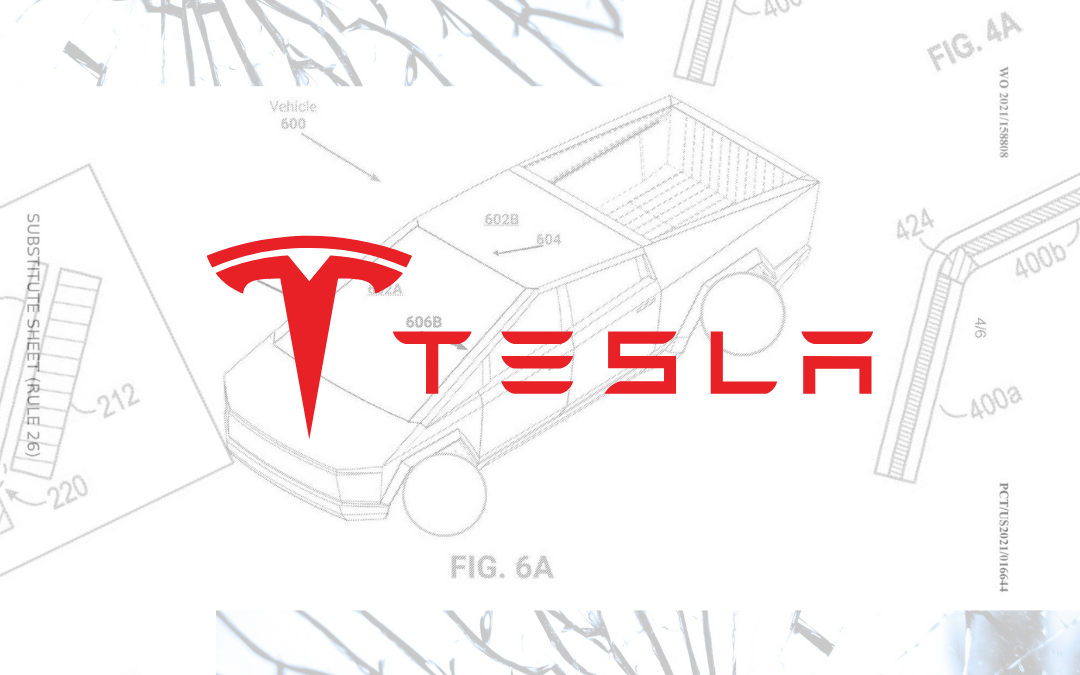Elon! Back at it again with the innovation! Take your eyes off the skies/the millionaire space race and turn your attention to the United States Patent and Trademark Office’s (USPTO) most recent patent filings from Tesla. Unfortunately, the Tesla Cybertruck is not coming this year to a driveway near you (see ya in 2022!), however, Tesla’s patent for a glass-forming method utilizing curves and “feature lines,” was filed this month. (Not sure what the heck a patent is? Jump down to the last paragraph!)
Entitled “Automotive Glass Structure Having Feature Lines and Related Method of Manufacture,” the patent describes a method of heat treatments on one to multiple layers of glass using lasers to create bends, curvatures with a radius of between 0.07 and 0.2 inches, or other feature lines to provide character to the glass windshield. The patent description also mentions that the Cybertruck dashboard could be complete made out of glass with a sheet of film acting as a cushion in case of an accident.
“An example method includes applying localized heat (e.g., via a laser, heating element) to a location of a substantially planar glass structure and bending the glass structure at that location (e.g., along a line of the planar glass structure) to form a feature line in the glass structure,” Tesla writes within its patent application.
The question becomes: Will this be technology that the Cybertruck will incorporate in 2022? Or is this patent filing Tesla’s preemptive way to protect the idea from falling into the hands of a competitor? You can depend on Tesla to continue to break these glass ceilings and keep the technology world rolling into the future.
What is a Patent?
A patent is an invention, manner, or method and a grant of property rights given to the inventor, “the right to exclude others from making, using, offering for sale, or selling” the invention in the United States or “importing” the invention into the United States, as issued by the United States Patent and Trademark Office. Generally, the term of new patents are twenty (20) years from the date on which the application for the patent was filed. What is granted is not the right to make, use, offer for sale, sell or import, but the right to exclude others from making, using, offering for sale, selling or importing the invention. Once a patent is issued, the patentee must enforce the patent without aid of the USPTO.
There are three types of patents:
1) Utility patents may be granted to anyone who invents or discovers any new and useful process, machine, article of manufacture, or composition of matter, or any new and useful improvement thereof;
2) Design patents may be granted to anyone who invents a new, original, and ornamental design for an article of manufacture; and
3) Plant patents may be granted to anyone who invents or discovers and asexually reproduces any distinct and new variety of plant.
(Information about Patents taken from the USPTO website)

